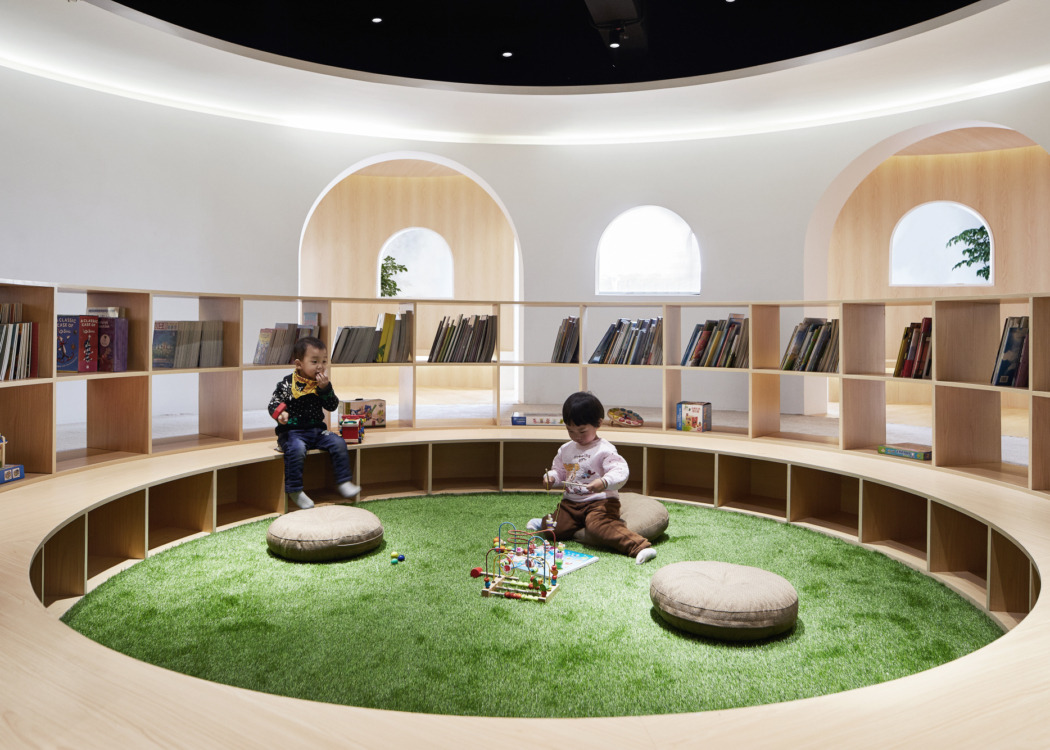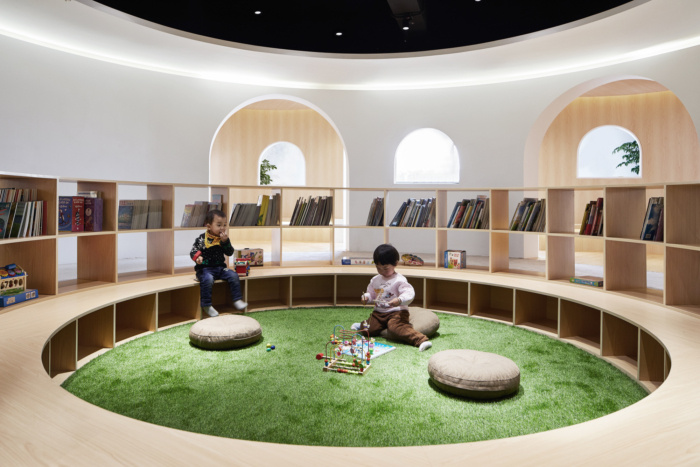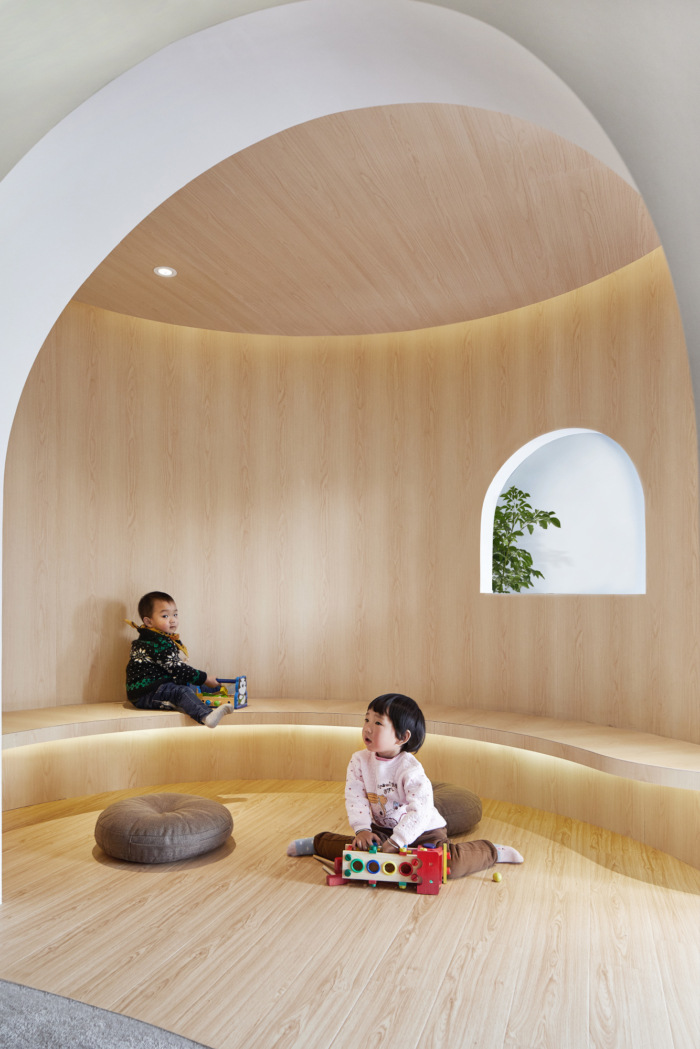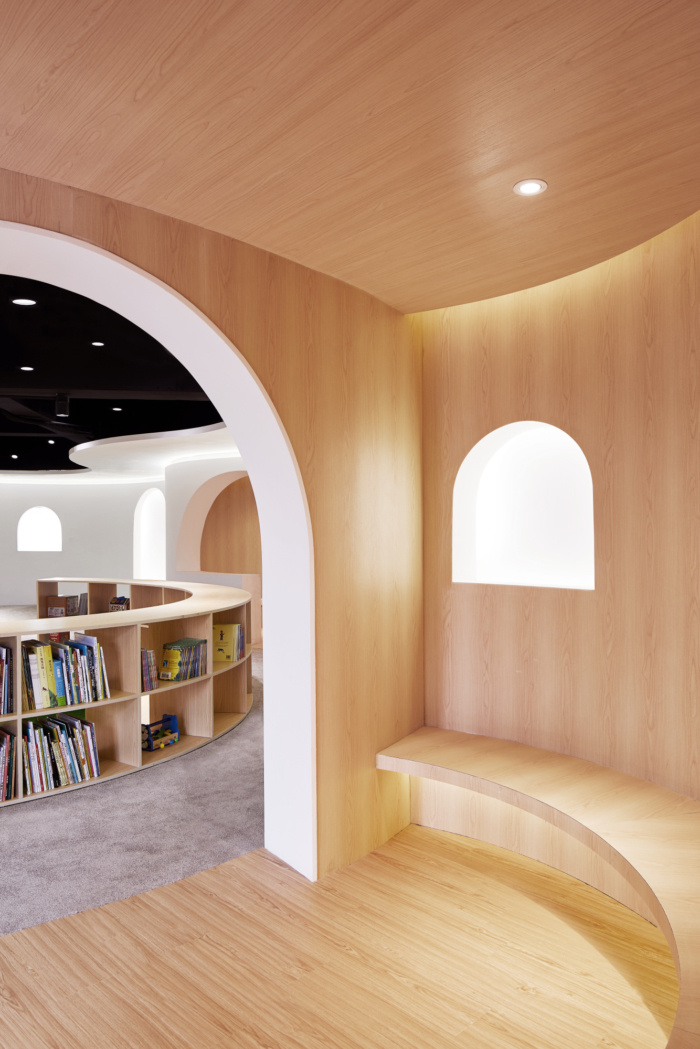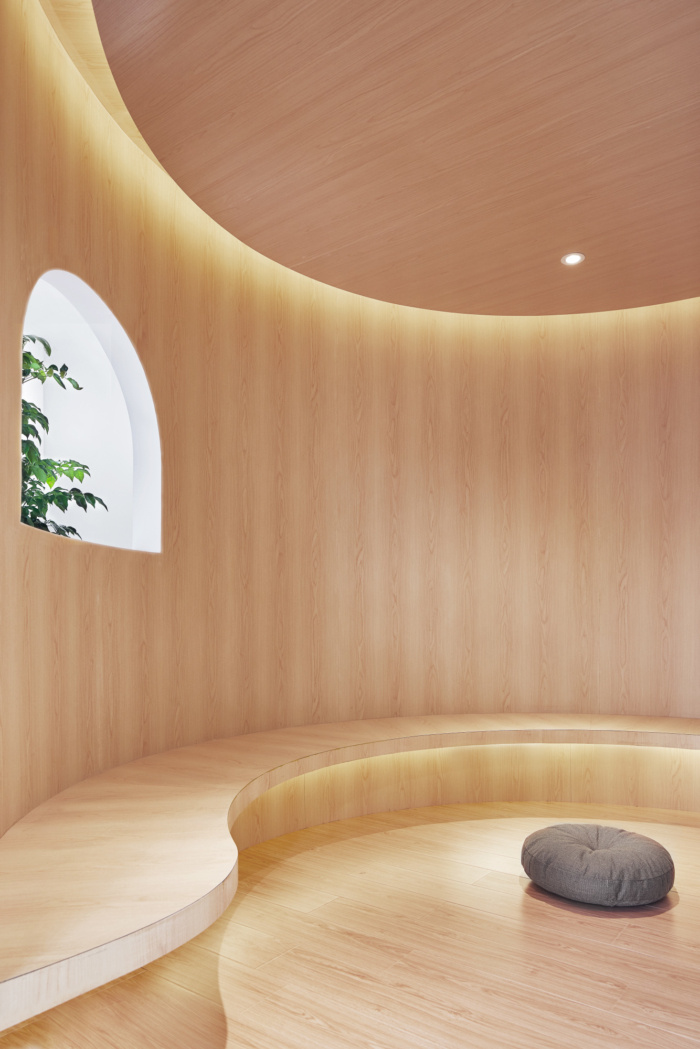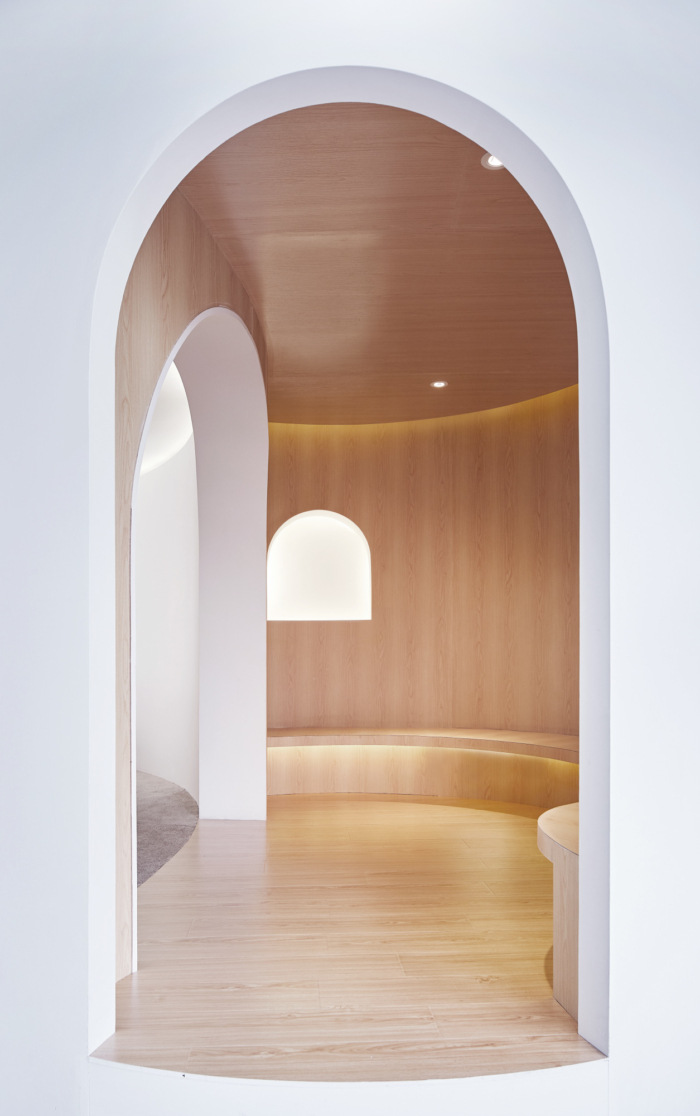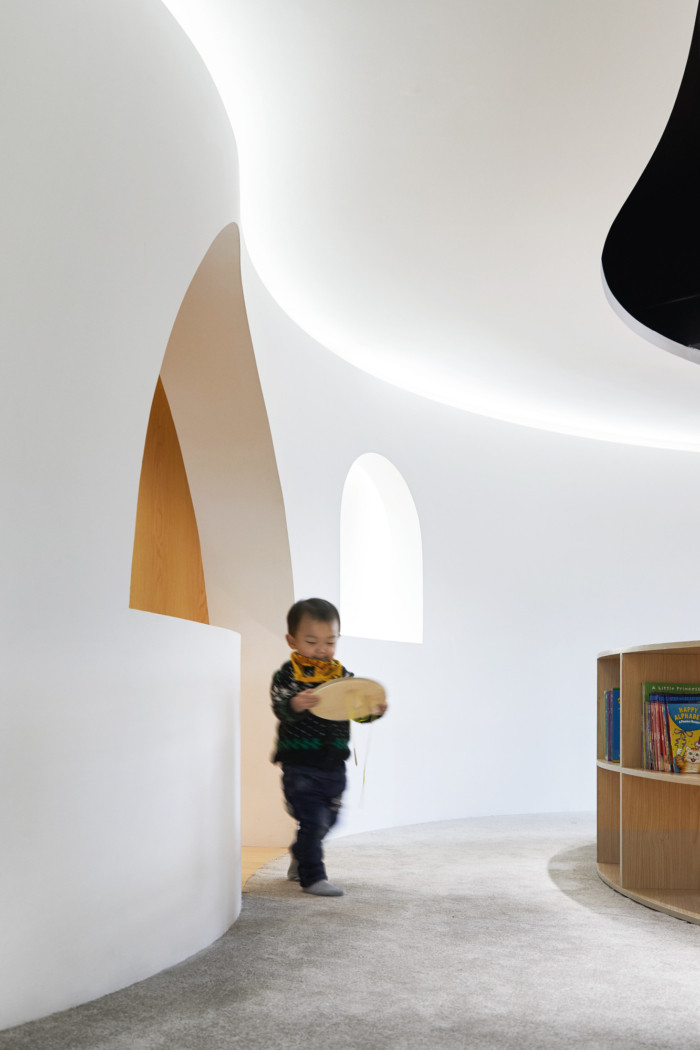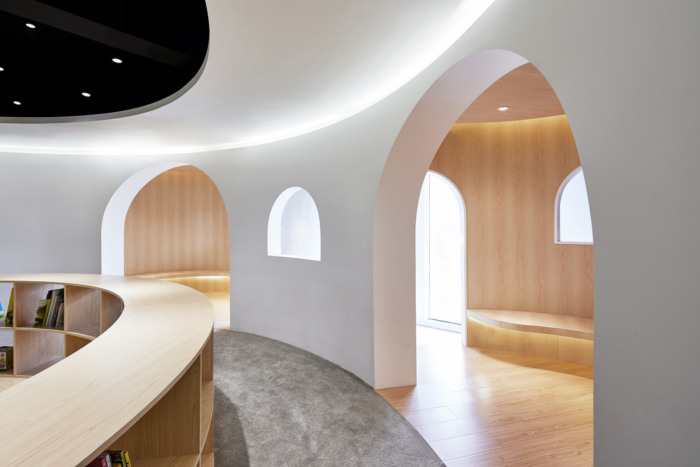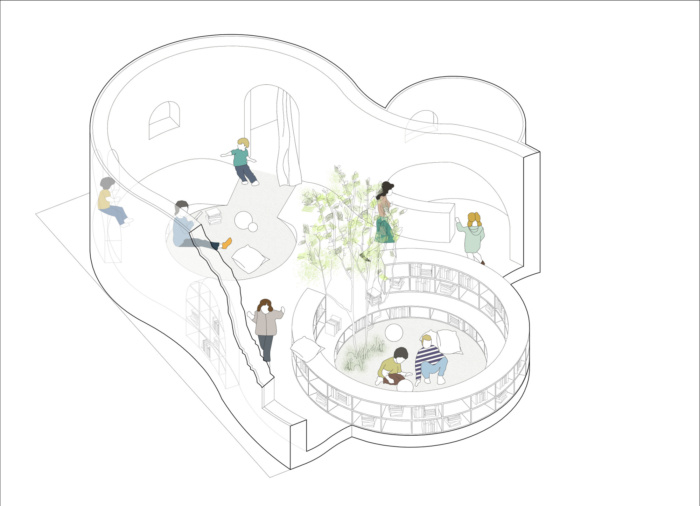Sissi’s Wonderland
Muxin Studio designed Sissi’s Wonderland with space for dreaming and exploration for all children visiting the library in Shanghai, China.
The main topic of the project is to give different configurations according to different realms in spaces. The varieties of spatial typology provide children with experiential guidance to explore boundaries between public and private spaces. During the process of moving through spaces with various qualities, the Introvert and extrovert tendencies of children are well reflected in their behaviors. In the experimental children reading space project, we are aiming to create a cozy and amicable place for children to read and play, inspiring their imagination.
After careful researches on various existing cases, we found that the traditional way of children space design, with its flamboyant decoration, superficial embellishment and excessive use of meaningless figures, has lost its attractiveness. Hence we choose to make the project different by concentrate on the shape of the space itself: it’s an attempt to turn the space itself into a giant toy, in which children can freely explore, discover and create their own lively experience.
The configuration of spaces follows an idea inspired by the game of blowing bubbles: several spaces are arranged according to their scales and functions before recombined and attached like bubbles. Since spaces with different functions communicate and fusion with each other, a multitude of spatial forms and hierarchies are created, in which openness and independence, public and private, interior and exterior are overlapped and interconnected in a creative and pleasant way.
It is essential for children to have a safe and high-quality environment as they embrace the world in its various perceptive aspects. The smoothly curving plan speaks all for itself: curved walls not only feel more comfortable, but also enhance the perceptibility of space in a child. Square corners, hard materials and even straight lines are avoided wherever possible for the sake of better protection.
Thinking from the perspective of a child, we planned and divided the space in children’s scales. Though spatially limited by the floor area, we managed to ‘squeeze’ in stairs with different heights, bookshelves that also serves as chairs, zigzagging ramps and mini arches in children’s size. All of these are in children’s scale. Boys and girls can climb up and down or play hide-and-seek in these facilities without parents worrying about potential dangers and injuries. According to many researches, children of 3-7 years old are in their most sensitive period of growing from their subjective worlds to the objective world. A flowing space like this helps expanding their perceiving and communicating abilities and reveal the true and creative nature in a child.
Just as garden grasses and flowers, every child has intrinsic ability of growth. Such abilities express themselves from within. It is the function of education, therefore, to fully awaken and exploit children’s potentials. In order to elicit an amicable relationship between the space created and the surrounding plants, as well as to bring children closer to the nature, we use wood as our main building material. The selection of white paint and the soft grey floor glue further guarantees the children a safe and interesting place to play, learn and interact. We grow green plants on the boundaries where different spaces meet, which helps sustaining the dynamic among person, space and nature.
Architect: Muxin Studio
Photography: Zhang Daqi

